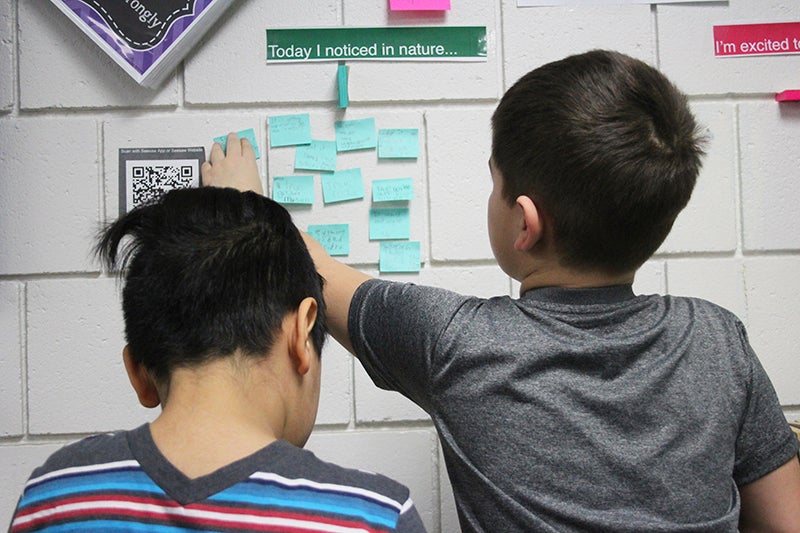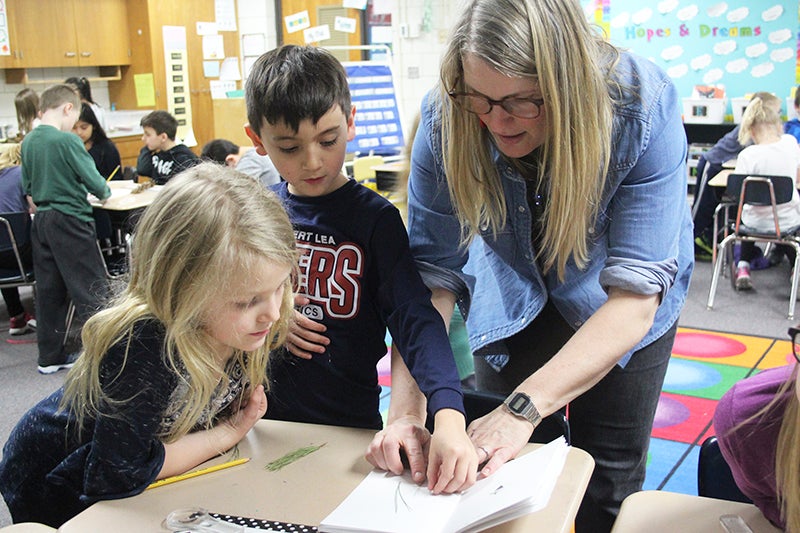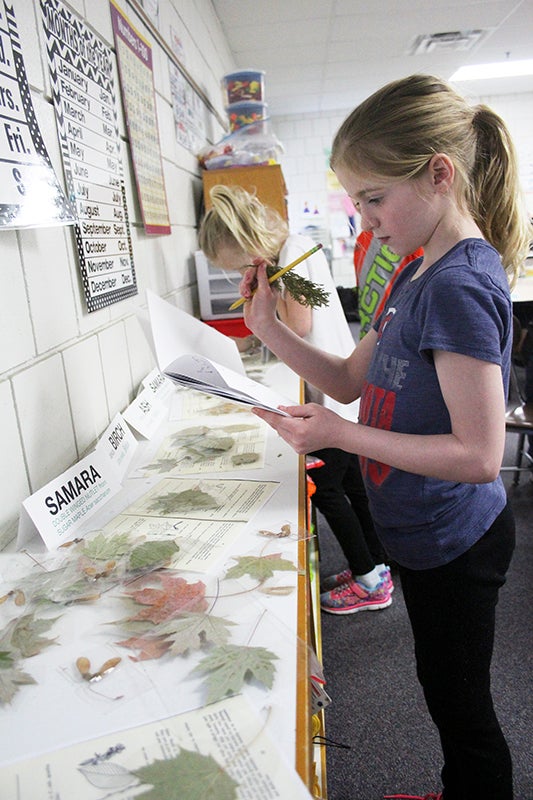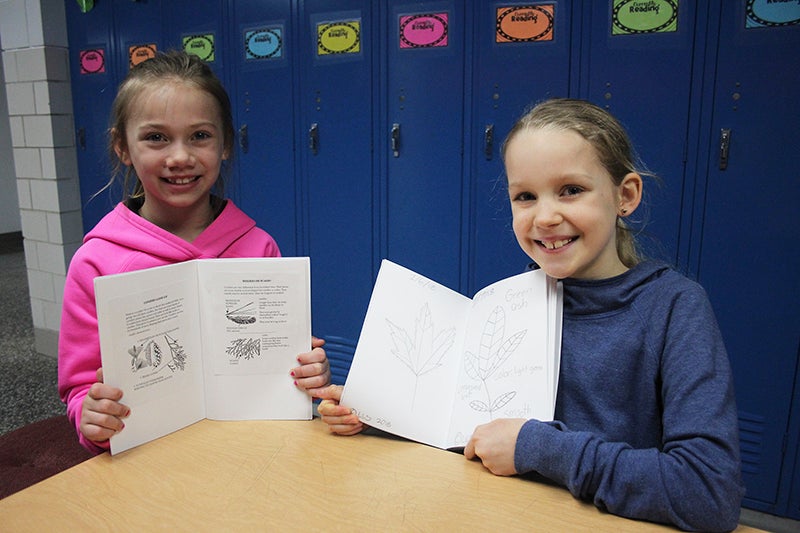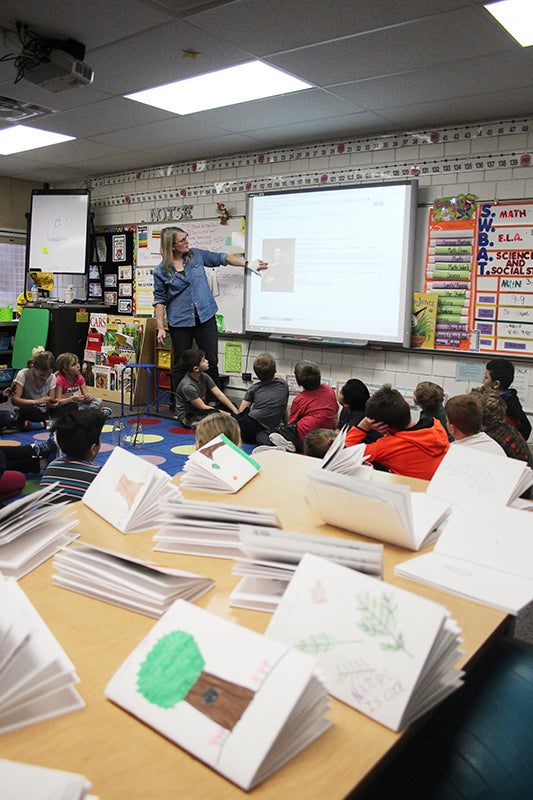Building up steam
Published 10:00 pm Tuesday, March 6, 2018
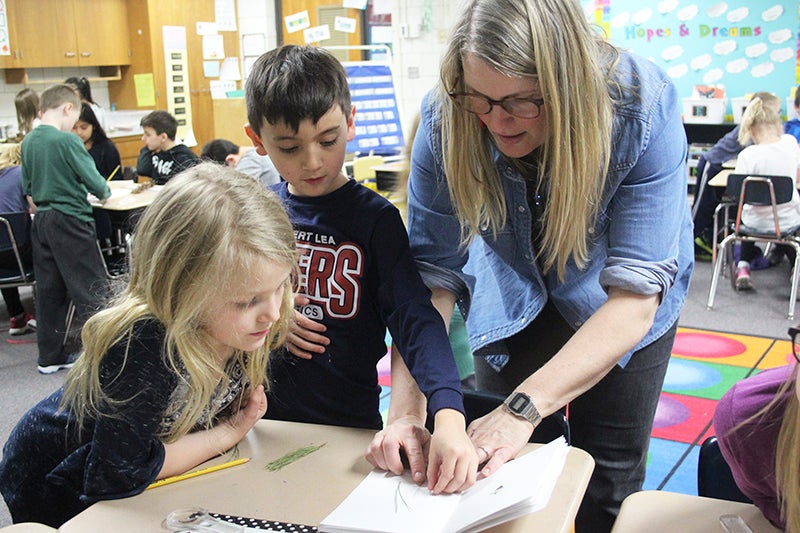
- Sarah Nassif, Max Malouff and Adilyn Hall confirm identification of a white pine Monday as they work on their naturalist notebooks. Sarah Kocher/Albert Lea Tribune
- Students in Clay Scott’s second grade class stick nature observations to their classroom wall Monday morning before school starts. Sarah Kocher/Albert Lea Tribune
- Sarah Nassif, Max Malouff and Adilyn Hall confirm identification of a white pine Monday as they work on their naturalist notebooks. Sarah Kocher/Albert Lea Tribune
- Haley Austinson considers options at the Botany Buffet while her second-grade class draws in their naturalist notebooks. Sarah Kocher/Albert Lea Tribune
- Ellery Schewe and Lily Sorensen hold up their naturalist notebooks for a picture Monday morning. Sarah Kocher/Albert Lea Tribune
- With the class’s naturalist notebooks on standby, Sarah Nassif begins her lesson Monday morning with Clay Scott’s second-grade class. Sarah Kocher/Albert Lea Tribune
Sibley 2nd-graders explore intersection of science and art
There’s some extra STEAM building up at Sibley Elementary School this week.
With the help of a Minnesota State Arts Board Learning Grant, the school has brought in COMPAS teaching artist and botanist Sarah Nassif to explore similarities between artists and scientists and to encourage self-teaching.
“The idea is to explore how artists and scientists really have the same skill sets,” Nassif said. “These are not different kinds of people that become artists and scientists necessarily.”
Nassif, who studied botany and does screen printing and public art in the Twin Cities, said scientists and artists share the same main three-step process: observe, record and share.
In Sibley’s second-grade classrooms, the students are observing their school’s trees. This week is the second of Nassif’s three-week STEAM (Science, Technology, Engineering, the Arts, Mathematics) residency with Sibley. She was also at the school for one week in February and will be back for one week in April. She works with each of the three classrooms for one hour a day.
The first week, students created naturalist notebooks and began recording their observations.
“We figured out what kind of leaves they were, we looked at the colors, we looked at like how the veins of the leaves are and we looked at the edges to see if they were smooth or spiky,” second-grade student Lily Sorensen said.
On Monday, Nassif said students were focusing on how artists think. Each week, Nassif introduces artists for students to learn about, Sibley second-grade teacher Clay Scott said. In February, the students looked into Beatrix Potter, who authored the “Peter Rabbit” books but was also a naturalist. They also studied Georgia O’Keefe, who worked with perspective and scale “in order to surprise people into noticing nature,” Nassif said. This week, students will study John James Audubon and graphic artist Charley Harper.
Nassif encouraged students to wear botanical patterns on Tuesday. She’s particularly interested in how fabric carries nature with it in botanical textiles. Later in the residency, students will come up with their own motifs and try screen-printing.
“Generally, I’m just excited to be here and work with these creative minds, these young, creative naturalists,” Nassif said.
It’s also a chance for the students to be doing the same.
“It’s just helping them take the time to make those observations that most of the time, they wouldn’t have had the opportunity to do that,” Scott said.
On Monday morning, several students filed into Scott’s classroom and headed to the wall opposite the door, stopping below a sign on the wall that said, “Today I noticed in nature ….” Each of the students would take a pencil and a small blue Post-It note to record an observation they’d made.
“After she left, the students have a new passion for just nature,” Scott said of the group’s session in February. They’ve been bringing him cones, leaves and sticks at recess.
“They were just questioning why things were,” he said.
The teaching weeks with Nassif are an ebb and flow process, Scott said. He gave her a list of science standards set up by the state, and they discussed how to relate them to the lessons she is teaching, or how they will fit with the direction the district is headed in.
The final week, students will fulfill a requirement of the grant that asks them to share their knowledge with the community, Scott said. They are still planning how to do this. Nassif will also join the students for a field trip, which Scott said is also still in the works.
“Science, nature and really art is all around them, and if they just take the time to make those observations, it’s really powerful,” Scott said.


